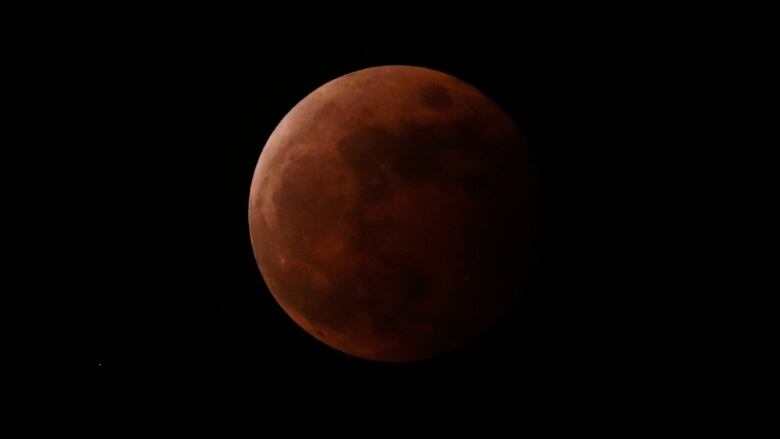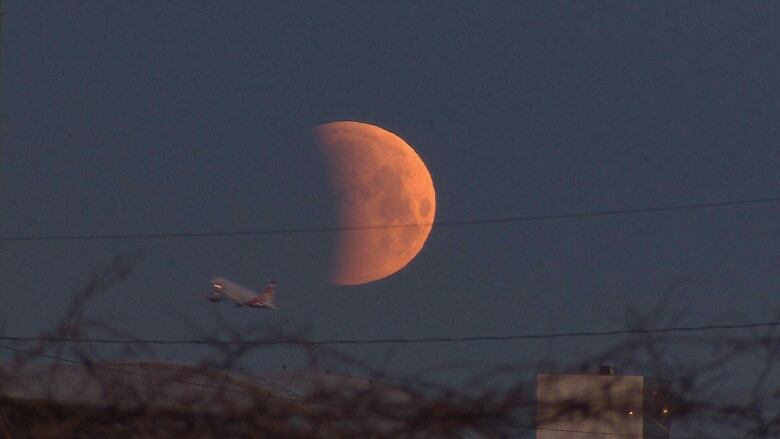Winnipeggers invited to view rare sky event: lunar eclipse and supermoon

Night sky watchers are in for a rare double feature on Sunday in the evening sky over Winnipeg.
A total lunar eclipsewill share the stage with a supermoon Sunday night a combination that hasn't been seen since 1982 and won't happen again until 2033.
Sunday'slunar eclipse is also called a blood moonbecause its colour is "distinctly orangey-red or coppery-red," saidScott Young, an astronomer and science educator at the Manitoba Museum.
When a full or new moon makes its closest approach to Earth, that's asupermoon.Although still about 354,000 kilometres away, this full moon will look bigger and brighter than usual. In fact, it will be the closest full moon of the year, about 48,000 kilometres closer than the average distance.
"Basically as the moon goes around the earth, it's sometimes a little closer, sometimes a little farther, by about eight or 10 per cent," Young said.
The label supermoonis somewhat controversial, because most people can't see the difference without a telescope, said Young. He believesthe term is a"manufactured labelto cut through social media." The real phenomenon is the beautiful, reddish colourof the moon during the eclipse, said Young.

Winnipeggers who want to see the show this weekend have only afew hours to see the spectacle.
"You can go pretty much any time Sunday night after the moon rises until midnight or so and catch part of this event," said Young.
Members of the Winnipeg Centre of the Royal Astronomical Society of Canada will set up telescopes in Assiniboine Park on Sunday evening to share this event with the public.
Viewing will begin shortly before 8 p.m. and continue until midnight.
The time of the various phases of the eclipse are:
- Moonrise: 7:10 p.m.
- Start of partial eclipse: 8:07 p.m.
- Start of total eclipse: 9:11 p.m.
- End of total eclipse: 10:23 p.m.
- End of partial eclipse: 11:27 p.m.
Telescopes will be set up north of the Assiniboine Park Pavilion, along the sidewalk that leads to the footbridge to Portage Avenue.












_(720p).jpg)


 OFFICIAL HD MUSIC VIDEO.jpg)
.jpg)



























































































